The Swadeshi (“buy Indian”) movement that developed in India as an integral part of Indian nationalism during India’s fight for independence from the British Raj had its roots way back in the mid-19th century. It was developed by stalwarts of the freedom movement like Dadabhai Naoroji, Gopal Krishna Gokhale and Bal Gangadhar Tilak. The economic strategy of the movement was to revive domestic products and production processes by boycotting use of British products with the objective of protesting against British rule and establishing self-rule in India. The movement has recurred several times in India over centuries. The strongest of them perhaps was the second Swadeshi movement, regarded as most successful of the pre-Gandhian movement, that started in the Bengal province, considered the nerve centre of Indian nationalism, in 1905 after the then Viceroy of India, Lord Curzon announced partition of Bengal. Formal proclamation of the movement was made on August 7, 1905 at the Calcutta Town hall where the famous Boycott resolution was also passed. With prominent leaders like Lala Lajpat Rai, Bipin Chandra Pal, Lokmanya Bal Gangadhar Tilak and Aurobindo Ghosh behind it, the movement gained nationwide attention fostering Indian nationalism.
Initiation of the Swadeshi Movement
Philosopher, social reformer and founder of the Namdhari sect, Sri Satguru Ram Singh Kuka is credited to have initiated the Swadeshi movement. According to sources he was the first Indian who used the movement as a political weapon against the British. He instructed the people of the Namdhari sect to boycott foreign goods and wear clothes made in India. Other measures employed by him saw the Namdharis avoiding British law and British courts and boycotting British educational system that saw children being restricted to attend British schools. His revolutionary movements gained momentum during 1871-1872 and he also sought help from Russia to drive out the British from India, however Russia refused to avoid war with Britain. He was imprisoned and then sent into exile in Rangoon where he remained a state prisoner for 14 years.
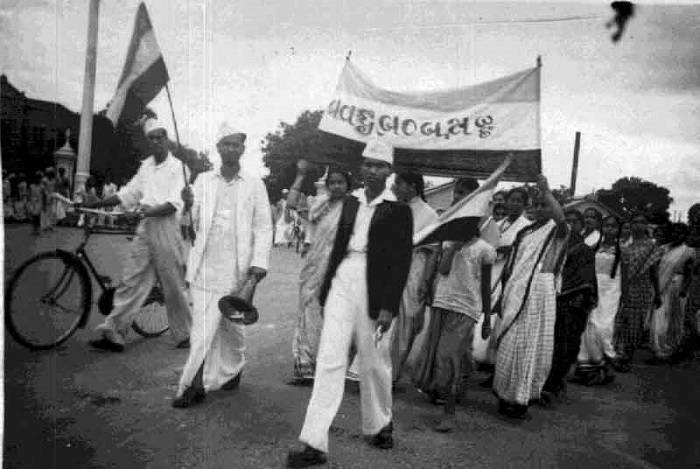
Image Credit : http://www.historydiscussion.net/history-of-india/swadeshi-movement-in-india/656
Circumstances Leading to the Swadeshi Movement in Bengal
Queen Victoria was asked to separate Bengal, the largest administrative subdivision of British India, by the then Viceroy of India, Lord Curzon. It was a fact that administering Bengal with a population of 70 million was undeniably becoming hard to handle, however the actual objective behind such partition was political as the British were worried that if the Bengali Hindus and Muslims join hands they would wage war against the British rule. While the Indian independence movement was gradually gaining strength, the British sought to weaken Bengal that was regarded as the nerve centre of Indian nationalism. The proposals of partition of Bengal became public in 1903 while the decision of dividing Bengal was declared by Curzon on July 19, 1905. The division of the Bengal Presidency, took place on October 16, that year into largely Hindu western areas of Bengal that presently constitute the Indian states of West Bengal, Odisha, Bihar and Jharkhand; and the largely Muslim eastern areas of East Bengal and Assam. Such division of Bengal meant that the British not only thrived in dividing Bengal on the basis of religion by separating the Bengali Hindus and Muslims but also succeeded in restraining the Bengali influence in India’s freedom struggle by reducing the Bengalis into a minority in the Hindu western areas of Bengal with around 37 million Oriya and Hindi speaking people compared to 17 million Bengalis.
After the proposal of partition became public, spontaneous protests at different parts of Bengal started occurring. The real strategy of the British behind the partition was crystal clear to the leaders of Indian nationalism who censured and expressed strong disapproval against such step. 50,000 pamphlets condemning such partition were circulated and moderate techniques of protest were undertaken including giving petitions, holding public meetings and press conferences.
Both the elites as well as the large middle-class from the Hindu Bengali community, who saw the partition as a “divide and rule” policy of the British, condemned it. While the elites were outraged as many of them had land in East Bengal that were given on lease to the Muslims, the Bhadraloks, that is the new class of ‘gentlefolk’ among the Bengalis belonging to both the rich and middle class segments of the community who dared to rise against the British rule saw it as a penalty for their political resolute on Indian nationalism.
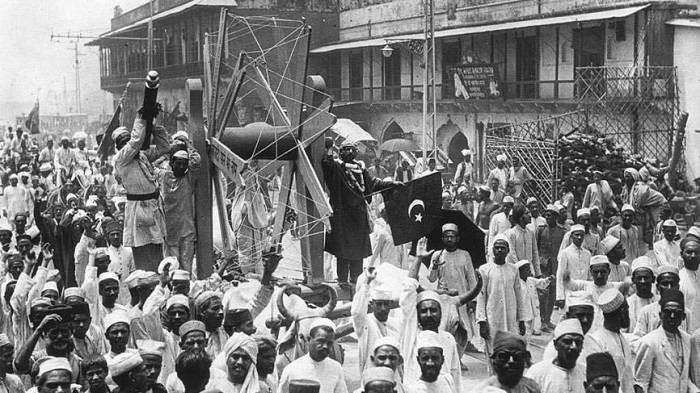
Image Credit : https://www.cntraveller.in/story/what-it-was-like-growing-up-in-pre-independent-india/
Proclamation, Objective & Nature of the Swadeshi Movement (1905)
The Swadeshi Movement was formally proclaimed at a meeting held at the Calcutta Town hall on August 7, 1905 where the Boycott resolution was also passed. Suggestion for boycott was first given by Indian freedom fighter, leader of the Brahmo Samaj and journalist Krishan Kumar Mitra. He openly called for boycott of foreign goods through his journal Sanjivani on July 13, 1905. The boycott movement was undertaken by the Bengalis after employing different other forms of constitutional agitations including petitions, vocal protests and conferences. The objective of boycott movement was to cripple the British economically by boycotting British goods, especially the cotton goods from Manchester the richest market for which in India was Bengal. This would result in pecuniary losses for the colonial rule thus creating pressure on them. Another purpose behind the movement was to revive the comparatively nascent Indian industries so that they can grow and sustain while facing free competition with highly developed industries of foreign countries.
Spontaneous and sporadic protests across Bengal gradually took shape of Swadesi (“buy Indian”) movement. British products were boycotted, people pledged to use Indian goods, shops selling foreign goods were picketed, western clothes and other products were thrown on bonfires and imported sugar was boycotted. Bombings took place in public buildings, armed robberies were staged and British officials were executed by group of young men.
Positive & Negative Aspects of the Swadeshi Movement
The essential features of the Swadeshi movement economically had both positive and negative sides. On the positive side the Indian industries saw regeneration with reawakening of use of indigenous goods. Demand of native products including clothing increased. The Bombay and Ahmadabad mill-owners endeavoured in filling the sudden shortage in supply of clothes due to the boycott movement. The cotton mills of India straightaway got an impetus of fostering the industry, thanks to the Boycott movement in Bengal. However such situation was also taken advantage of by mill-owners as according to sources the Bombay mill-owners heavily cashed in on the ‘Bengali Sentimentalism’ of buying only Indian clothes, thus making huge profits. The once prospering weaving industry of Bengal that was destroyed by the British after they started ruling the province from the 18th century also started supplying clothes, however not so fine handloom products, to meet the sudden increase in demand. The Bengalis nevertheless accepted the coarse clothes wholeheartedly with complete sincerity and commitment towards the Swadeshi Movement. A song pleading people to honour and accept the coarse clothes offered by the poor Mother who does not have means to provide better clothes to her children became very popular across the nation inspiriting Indian nationalism. Several textile mills, soap factories, tanneries, shops, match factories, insurance companies and banks among others were also set up which were based more on the spirit of nationalism rather than on the mind set of doing business.
The British faced the negative side of the Swadeshi movement, which was of course the very purpose of the movement. The foreign goods including clothing, sugar, salt and various other luxury items were not only boycotted, but they were also burned. Campaigns continued including performing occasional bonfires of foreign goods, conducting processions, singing popular songs and publishing articles in newspapers in pursuit of keeping the light of the Swadeshi movement ignited. Volunteers were enrolled to keep a strict vigil and fines were imposed on those found using foreign sugar, while Brahmins denied assisting in conducting pujas and ceremonies in house of those who used European salt and sugar. Warnings were given to the Marwaris so that they refrain from foreign articles import. The Swadeshi movement also led to social boycott of not only buyers but also sellers of foreign goods. Those who opposed the movement or in any way helped the Government in repressing the movement were also boycotted and ostracised socially.
Impact of Swadeshi Movement on Students
The students who supported Swadeshi and boycott movements faced stern and violent actions from the British Raj. Circulars were given that those students found involved in the boycott movement in any way would face severe penalty. The students were also warned to refrain from giving voice to the slogan ‘Vande Mataram’ in public places which would also amount to punishable offence. Even the schools and colleges were not spared from such warnings as these institutions were alarmed that if their students defy such orders then Government grants would be withdrawn and the institution may also lose affiliation while their students would be proclaimed ineligible for Government Service. Instructions were given to authorities of such institutions to be vigilant on their students and to report names of disobeying students to the Education Department so that strict measures can be taken against them. It was also conveyed to the teachers and other management staffs through the magistrates that if required they would be commissioned as Special Constables. The principals of colleges were directed to show causes by the Direction of Public Instruction for the reason of non-expulsion of students who participated in picketing. The teachers who refrained from whipping the boys were asked to resign.
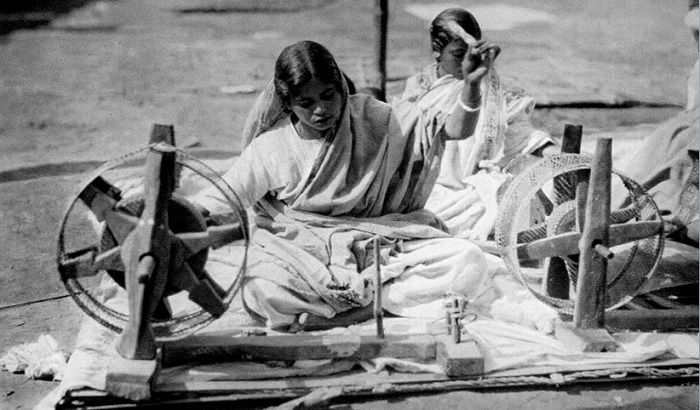
Image credit : https://www.1hindi.com/essay-on-swadeshi-movement-in-hindi/
Such measures only gave rise to resentment across the country and were sternly censured by the Indian-owned Press. It was taken up as a challenge by the Bengalis and college students of Rangpur disobeyed the orders of the Government while their guardians refused to pay the fine and instead established a national school for the expelled students. The students then protested the action of the authorities by boycotting the Calcutta University that was tagged by them as Gulamkhana that is a place where slaves are manufactured. On November 10, 1905, a conference was held that was attended by many prominent personalities of Bengal from different occupation or position within the society. There it was resolved to set up a National Council of Education so that a system of education can be arranged which will be under national control. The National Council of Education was established on August 15, 1906. Bengal National College was established and Aurobindo Ghosh was inducted as its principal. Rapid establishment of several national schools and colleges across the nation was witnessed during this time. In pursuit of parting technical education, a Bengal Institute of Technology was established and funds were raised so that students can be sent to Japan for advanced learning. The way the inspirited Bengalis from both parts of divided Bengal acknowledged the cause of national education and countered the repressive measures of the British only fostered the idea of the Swadeshi movement which by such time thrived in spreading its wings across the nation.
Impact of Swadeshi Movement on Art & Culture
The Swadeshi movement had a great impact on the cultural arena. Several songs composed during this time by stalwarts from the field including Rabindranath Tagore, Makunda Das, Dwijendralal Ray, Syed Abu Mohammad and Rajani Kanta Sen became extremely popular infusing Indian nationalism among people from different walks of life. Many of these songs were adopted by prominent Indian nationalists and groups in keeping the spirit of the Indian independence movement alive. The liberation struggle of Bangladesh undertaken decades later took inspiration from the song ‘Amar Sonar Bangla’ (“My Golden Bengal”) penned down by Rabindranath Tagore during the Swadeshi movement in 1905. The first ten lines of this song were adopted by Bangladesh as its National Anthem in 1971. Refinement of Indian art was also witnessed during the Swadeshi movement.
‘Vande Mataram’ meaning “I praise thee, Mother”, the title of a Bengali poem written by eminent Bengali writer, poet and journalist Bankim Chandra Chatterjee in the 1870s was used by the leaders of the anti-partition movement as their slogan. The slogan ‘Vande Mataram’ as also the revolts eventually garnered widespread attention across the nation. The poem ‘Vande Mataram’ that personified India as a mother goddess and was included in the writer’s 1881 Bengali novel titled ‘Anandamath’ played an instrumental role in the Indian Independence movement. Rabindranath Tagore composed a song out of the poem. The song eventually developed into an extremely popular marching song of Indian nationalists in 1905 where the Mother was interpreted as Bharat Mata (Mother India). Indian philosopher, yogi, guru, poet, and freedom fighter Sri Aurobindo referred it as the “National Anthem of Bengal”. The first two verses of the song were later adopted by the Congress Working Committee (in October 1937) as the National Song of India. Both the song and the novel ‘Anandamath’ were banned by the British Government, however this couldn’t deter the general public or workers who did not hesitate to sing the song over and over again even after being put behind bars repeatedly for singing it. The ban was later removed post Indian independence from the British rule.
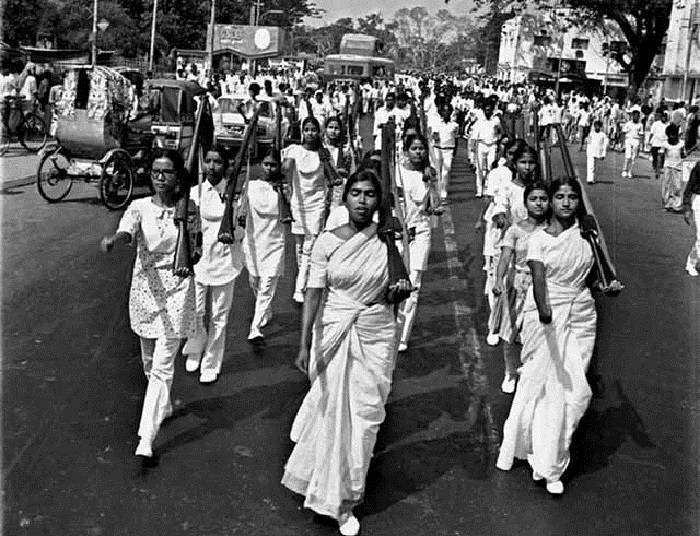
Image Credit : https://gaddingaway.wordpress.com/2015/05/07/india-history-series-swadeshi-movement/
The newspapers in Bengal also played an instrumental role in protesting against the partition of Bengal and revolutionizing the people for the cause of a united Bengal. These included prominent roles from four leading newspapers of Calcutta, namely the Amrita Bazaar Patrika, the Hindu Patriot, the Indian Mirror and the Bengalee; as also the vernacular newspapers like Bangabashi and Sanjivani. In an early issue of the Amrita Bazaar Patrika dated December 14, 1903, the newspaper urged people of East Bengal to conduct public meetings across towns and villages in pursuit of preparing a petition to submit to the government, which garnered signatures of lakhs of people.
Steps Taken by the British Government in Restraining the Swadeshi Movement
The police roughly handled and lathi charged the volunteers of the Swadeshi and boycott movement, even in cases where peaceful picketing and protests were conducted. The police had free hand in applying what was called ‘Regulation Lathis’ to disperse the protesters. Although such assault of the police was described as “mild lathi charge”, the severe wounds and injuries inflicted on the people spoke volumes of the brutality applied in repressing the nationalists. While students were forbidden to take part in the movement with threatening of dire consequences; uttering Vande Mataram in public places was made illegal; processions and meetings were banned; rural markets were dominated; leaders were imprisoned sans any trial; and attempts were made to stir up the loyal Muslims against the rebellious Hindus. In some way the British thrived in separating the very essence of Bengal on the basis of religion. Eventually the elites from the Muslim community met the new viceroy, Lord Minto in 1906 and sought for separate electorates for Muslims as also proportional legislative representation. The All Indian Muslim League political party was founded in December 1906 during a conference hosted by Nawab Sir Khwaja Salimullah held at Ahsan Manzil, the official residence of the Dhaka Nawab Family in Dhaka (presently in Bangladesh). Although such Hindu- Muslim Divergence was opposed by prominent Indian freedom fighter Mahatma Gandhi, the seed of the “divide and rule” policy sown by the British already started germinating and only developed with time.
Effects of the Swadeshi Movement
Due to lack of exact statistical data, it is hard to estimate the precise effect of the boycott movement on foreign goods import in Bengal. The official and confidential police reports however suggest that there was a steep decline in import of British products in the first couple of years or so, especially with respect to cloth. Several secret revolutionary organizations that were resolute in countering the Government came up during this time. The movement that was initiated as a mere boycott of foreign goods with time became widespread across the nation evolving as an integral part of the greater movement, the Indian independence movement. Emphasis was given on self-reliance or atma shakti thus asserting on national dignity, honour and confidence and with such mind set several Indian enterprises, organisations and institutions came into being. The Swadeshi movement led the people to learn to challenge and disobey the British government explicitly without fearing the atrocities of the police and imprisonment. Even an ordinary man didn’t shy away from showing his love and respect for his motherland and resentment over the British rule.
Lord Hardinge later on December 12, 1911, re-united the two parts of Bengal in face of continuous political protests as well as to pacify the sentiment of the Bengalis. The Oriya, Hindi, and Assamese areas were taken out of the Bengal Presidency thus dividing the province this time on linguistic ground instead of on religious ground. While in the west Bihar and Orissa were separated from the Bengal Presidency and the Bihar and Orissa Province was created on April 1, 1912, in the east Assam was separated and made a chief commissioner’s province in 1912. The annulment of partition of Bengal was however not taken well by the Muslims. As a concession the British decided to shift the administrative capital from Calcutta to Delhi, a place historically associated with Muslim glory.
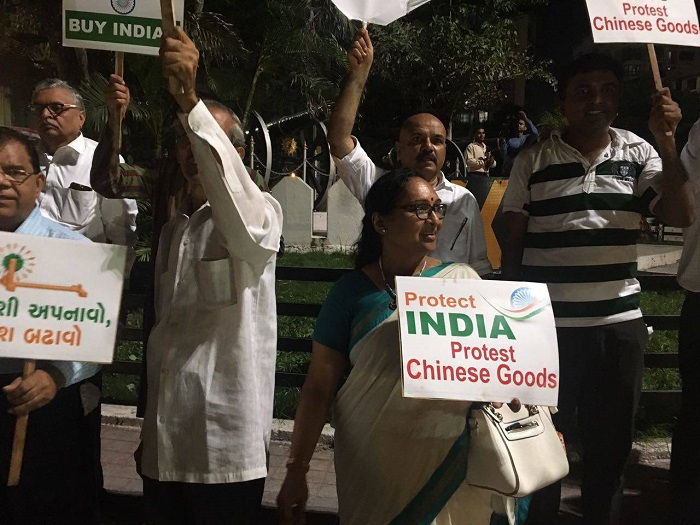
Image Credit : http://geetadshroff.com/swadeshi-movement-in-surat/
Other Phases of the Swadeshi Movement
The Swadeshi movement saw its resurgence several other times both during pre-independence and post-independence of India. The concept of Swadeshi shaped up by Gandhi during 1918 to 1947 witnessed a rise of Indian industrialists. Extensive restrictions on international as also inter-state trade was seen between 1948 and 1991 when an elaborate system of industrial licensing termed as the Licence Raj or Permit Raj accompanied by red tape was required to establish and operate businesses in India. The Licence Raj reduced significantly in 1991. The government of India reduced licensing regulations, taxes, duties and tariffs and paved way for international trade and investment introducing a liberalisation policy. Post liberalization and globalization India has witnessed a considerable growth in the Indian economy. However the Swadeshi movement promoting use of Indian products is still pervasive thanks to the present day torch bearers like Indian social activist Rajiv Dixit and yoga guru and co-founder of the Patanjali Ayurved Ltd Swami Ramdev.


